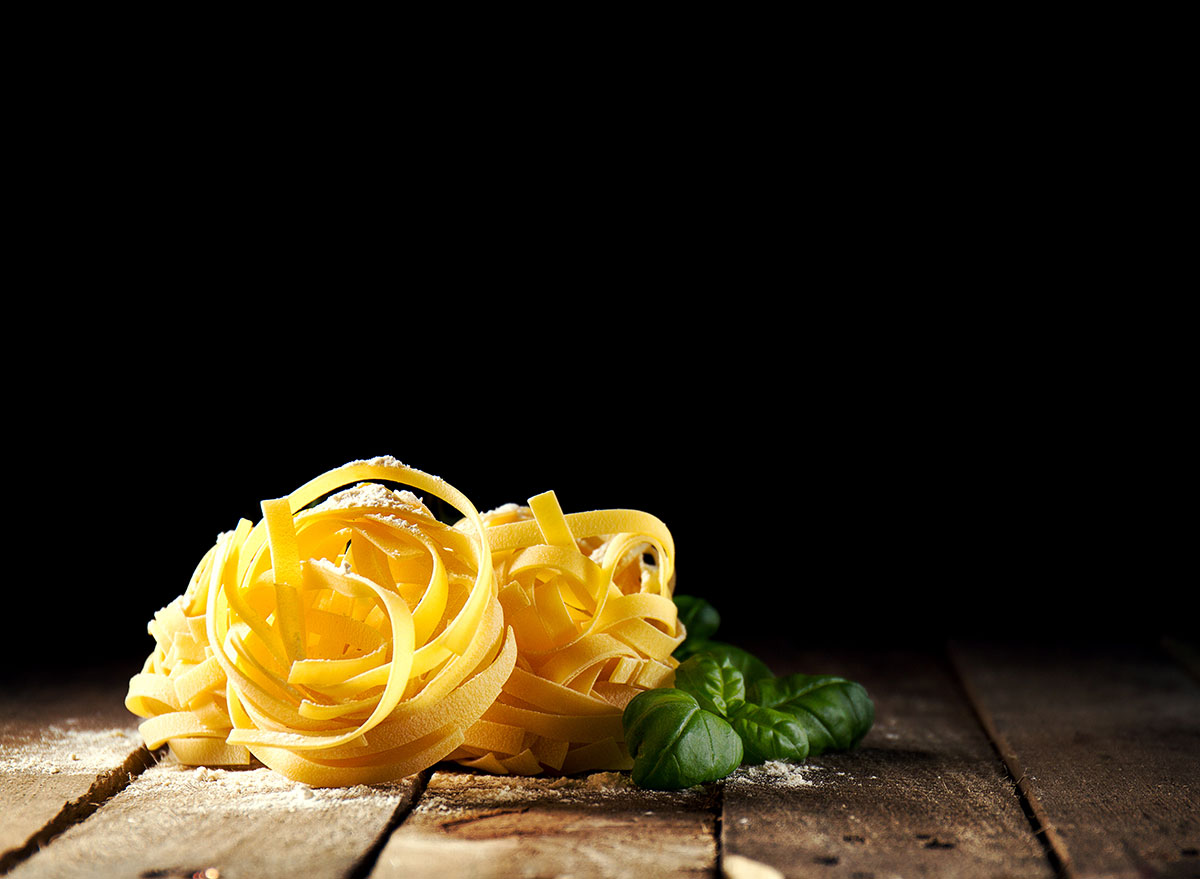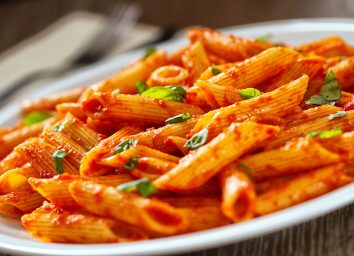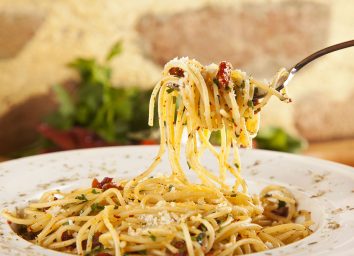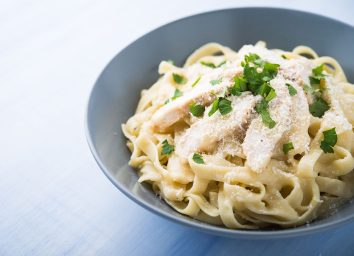The Difference Between Italian and Asian Style Noodles

If you love noodles—whether that be twirling ramen around chopsticks or plunging a fork into a big heaping bowl of spaghetti—you may have a burning curiosity about all the different variations such a simple food can embrace. Two cultures heavily use noodles in many traditional dishes. But what is it that makes them so different?
To properly explain the difference between Italian and Asian-style noodles, we consulted Chris Barch, chef, and manager of culinary standards at North Italia; Bryan Forgione, executive chef, Buddy V’s Ristorante; and Steven Aung, executive sous chef at China Poblano by José Andrés.
What are some of the main differences between Asian-style noodles and Italian-style noodles?
For starters, they’re not even called the same thing.
“The Asian version is always referred to as noodles, and the Italian version is generally referred to as pasta,” says Brach. “The process of making both types is somewhat similar in that you have to work gluten, build structure, and extrude or cut to the desired shape.”
Aside from how they are generally referred to, the other key difference is the ingredients that are used to make each. Brach says that Asian style noodles vary in ingredients much more than Italian ones do.
“For example, soba uses buckwheat, lo mein uses eggs, rice noodles use rice,” he says. “Italian pasta essentially has two main pasta doughs: egg dough and non-egg dough. These [kinds of] pasta can be seasoned with anything, such as squid ink, herbs, [and] spinach.”
Forgione says that the majority of Italian pasta is made from wheat flour, specifically durum semolina, and then shaped into different noodles. Just think about how many kinds of Italian noodles there are out there: from rigatoni to fusilli, the pasta shape options are quite endless.
“With Asian noodles, I’ve noticed you can see a lot of different flours used, such as mung bean starch, buckwheat, and rice flour applied in various ways. Wheat is used a lot as well, but the stretching process can be a bit different,” says Forgione.
Aung points out another key difference between the two variations of noodles.
“Italian noodles, both fresh and dry, are generally all cooked to the same texture: al dente,” he says. “Asian noodles vary in textures, ingredients, and shapes. Asian noodles may be made with rice or wheat flour, legumes, root vegetables, egg, and even seafood. Depending on the dish, the texture can be soft, crispy, chewy, or firm.”
Have you ever tried sweet potato noodles or glass (cellophane) noodles? Both of these noodles fall under the umbrella of various Asian-style noodles.
How many different types of Italian-style noodles are there?
“Not sure there is a definitive answer to that! A few hundred for sure, though,” says Forgione.
“This is really hard to define, as there are so many off-shoots of other [kinds of] pasta,” says Barch. “For example, tortellini, tortelli, and tortelloni are all variants of the same thing based on size. Based on who you ask, there can be anywhere from 60 to 260 different shapes.”
So why are there so many different shapes, then? Barch explains that shapes of pasta can indicate which region of Italy the pasta originated in, as well as the distinctive dishes they are used in.
“Curves and ridges are designed to hold heartier sauces, while longer, thin pasta pairs better with lighter sauces and brodos. There is a story behind every shape and name.”
For example, at North Italia, a pasta dish called Radiatori is served, which Barch describes as a cross between cavatelli and rotini.
“This shape was designed to hold heartier, heavier sauces and was given this name due to it resembling an old-style radiator,” he says.
How many different types of Asian-style noodles are there?
“Asian countries have made noodles for thousands of years,” says Aung. “There are certain styles that are over four thousand years old! The main techniques used are: hand-cut, extruded, peeled, pulled, kneaded, and flicked. The style and variety of noodles produced are endless.”
What are some of the most common dishes you see authentic Italian-style noodles in?
“I’ve seen a lot of [kinds of] pasta are interchanged in classic sauces depending on who is making it, but some of the ones I personally love are Pappardelle con Ragu, Linguine con Vongole and Bucatini alla Carbonara,” says Forgione.
What are some of the most common dishes you see authentic Asian-style noodles in?
“At China Poblano, we serve a few common dishes like Dan Dan Mian made with hand-cut wheat noodles; Beijing Glass, which is a chilled cellophane noodle dish; and Swallow a Cloud, our wonton soup made with egg noodles,” says Aung. “Other popular Asian noodle dishes are China’s Chow Fun, Japanese Ramen, a Korean sweet potato noodle dish called Jap Chae, Thailand’s Pad Thai, and Vietnamese Pho Noodle Soup.”
What are some tips you have for cooking pasta?
Forgione says to think about the kind of texture you want to achieve before you cook the pasta. “When doing a creamier style dish, for example, you will want to use a thicker pasta that will hold up, like the classic fettuccine, or pasta that will grab onto the sauce with its ridges, like a cavatelli or penne rigate.”
The sauce plays a big factor in this! Also, both Forgione and Barch say that seasoning the water is a step that should not be overlooked.
“Generally, there isn’t a lot of salt in the actual dough itself, as it can make it tough. However, seasoning your pasta water really is a game-changer,” says Barch.
Forgione suggests that you give the seasoned water a taste test before adding in your pasta.
“If the water is bland, then your pasta will be bland, and your dish will fall short,” he says. “Salt your water until it is fully seasoned. It should be salty like the sea!”
Finally, not every pasta will achieve a desirable texture at the same time. Forgione says that fresh pasta cooks more quickly than a boxed variety.
“If you are buying boxed pasta, I would recommend following the times listed on the box—they are usually pretty good about giving you proper times for cooking,” he says.
Then there’s the sauce.
“Finishing the pasta in the sauce is also key, says Barch. “The starch from the pasta thickens the sauce and helps bind the dish together. It also allows the sauce to permeate the pasta and really make the dish shine.”
What are some tips you have for cooking Asian-style noodles?
Aung warns to never overcook or cut noodles.
“Cutting noodles will bring you bad luck,” says Aung. And that is very important for any chef to know!








